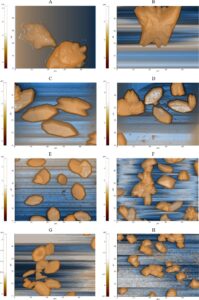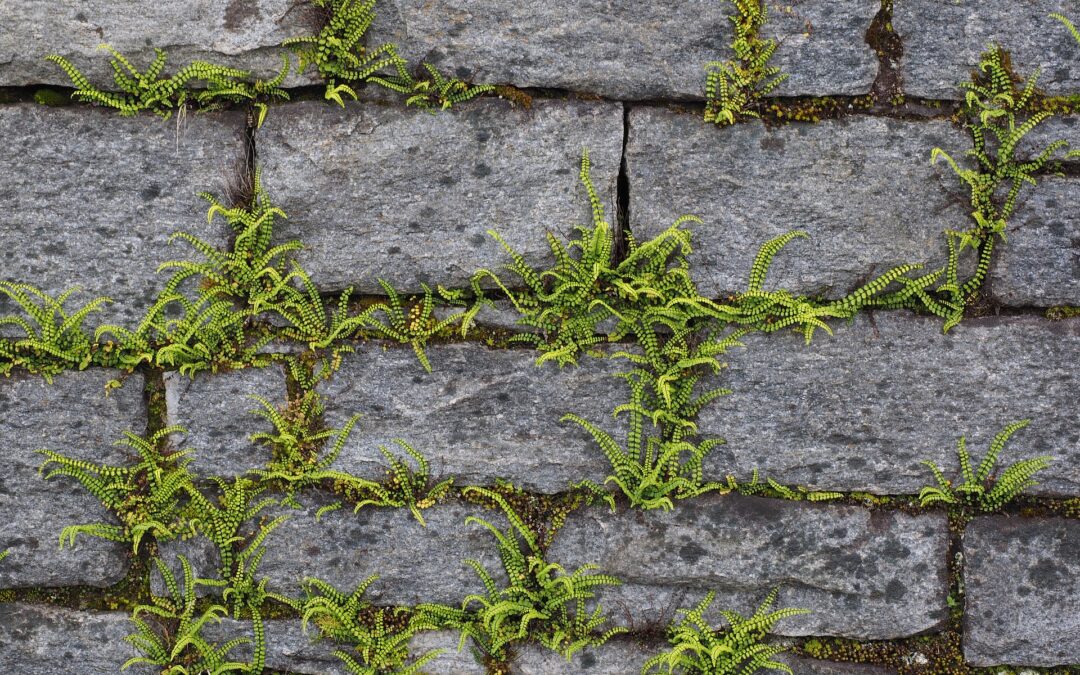In the herbalist tradition there are plants capable of “breaking” kidney stones and favoring the expulsion of the gravel. Among these stands out the stonebreaker herb for kidney stones, a real natural remedy.
The “Stone Breaker”: how to recognize it
The scientific name of the “Stone Breaker herb” is Ceterach officinarum, popularly also known as “Rust grass”, or “wall fern”. It is a 5-15 cm high perennial fern characterized by a short rhizome that gives rise to green fronds with pinnate lamina with brown-orange trichomes only on the back and hence the name “Rust Grass”. It is present in most of the temperate zones of Europe and Asia, with a widespread distribution in western and central Europe, including the Mediterranean region. In Italy it is common in almost the whole territory. It grows in the crevices of carbonate rocks and between stone and brick walls from the plain up to 2000 m.
The aerial parts of the Stonebreaker herb are widely used in traditional medicine and its components include mineral salts, mucilages, tannins, flavonoids, caffeic acid and chlorogenic acid. We herbalists collect the leaves in the summer or early autumn. This plant was already known to the ancient Greeks and mentioned by Vitruvius with the term Asplenon. Its infusions were already known in Southern Italy for their diuretic properties and as a therapy against kidney stones, and it is in this region that this herb was called ” stonebreaker “.
Kidney stones: what they are, the symptoms, why they form
We know that the kidneys can be considered a “chemical laboratory” that works incessantly, purifying almost a ton and a half of blood a day, in particular from acid waste (uric acids). Among the disorders that most commonly affect the kidneys are “gravel” and kidney stones (technical term: “lithiasis“). Kidney stones, accumulating inside the kidney, can obstruct the normal flow of urine, causing damage to the urinary tract.
Symptoms of kidney stones: acute and persistent pain in the hips is the main symptom that signals the presence of the known “pebbles”, but the stone can also exist without causing clear and precise symptoms, remaining in a silent state that can last even for long periods. However, here are the spies to watch out for:
- increased urinary production and emission,
- cloudy and foul-smelling urine,
- relapsing and recurrent urinary infections (cystitis, urethritis).
Factors favoring the onset of kidney stones are:
- sex (men are three times more likely than women to have this pathology);
- diet, especially with a low intake of liquids (a limited urine flow favors the stagnation of liquids and so the precipitation of the salts contained);
- family history;
- hyperthyroidism;
- chronic urinary tract infections;
- abuse of certain medications or salt supplements.
Nephrolithiasis is and continues to be a global public health problem as it affects 1-20% of the world’s adult population. Calcium oxalate (CaOx) is the main component of kidney stones. The precipitation of calcium oxalate crystals along the urinary tract, dependent on supersaturation, is the primary condition for stone formation.
Kidney stone treatment: the Stone Breaker herb and traditional uses
The Stone Breaker is a wild herb with an anti-inflammatory action, used for centuries to dissolve kidney stones (in technical terms it has an anti-lithiasic action). The herbal tradition in this regard is particularly interesting because it attributes to this herb the ability to increase the solubility of alkaline salts; moreover, by relaxing the smooth muscles of the genito-urinary tract, this herb would be able to generate the expulsion of kidney stones. Finally, tradition teaches that it not only eliminates the obstructions that can form in the urinary tract, but also attributes a diuretic and purifying action after overeating. However, the stonebreaker has been the subject of studies by traditional medicine only since the 1960s.
Kidney stone treatment: the Stone Breaker herb: from tradition to science
The study that we at Erboristeria Como propose to you, published on PubMed, is: “In vitro effects on calcium oxalate crystallization kinetics and crystal morphology of an aqueous extract from Ceterach officinarum: Analysis of a potential antilithiatic mechanism”, by Roberta De Bellis et al., 2019.
Objectives of the study and what we wanted to find out
The present study aims to investigate:
- the anti-lithiasic capacity of an aqueous extract of Ceterach officinarum (Spaccapietra) at various stages of stone formation,
- its possible mechanisms and effects on an in vitro model of human intestinal enterocytes to stimate the potential therapeutic use of Ceterach officinarum to treat and / or or to prevent nephrolithiasis.
What has been discovered is first of all that the aqueous extract of the Stone Breaker is confirmed as a good source of antioxidants with a high antioxidant effect. The antioxidant capacity of the extract was determined with the ORAC method. Thanks to the spectrophotometric determination of the total content of phenols and flavonoids, as well as to the HPLC analysis, it appears that this extract includes high levels of phenolic constituents: a contribution of these phytochemicals on the anti-lithiasic activity of the Stonebreaker cannot be excluded.
Moreover the results of the study made it possible to detect an important impact of the aqueous extract of the Stonebreaker on the kinetics of crystallization of calcium oxalate induced in vitro and on the morphology of the crystals, showing its role in the reduction of kidney stones.
Ceterach officinarum against kidney stones: the observed anti-lithiasis action
In this in vitro study it has been shown that on kidney stones, the Spaccapietra extract, at progressively increasing doses, causes a sequence of effects:

Kidney stones: Representative topographic images of CaOx crystals with increasing C. officinarum AE concentration. (A) and (B) Control samples, (C) 1μg dw/ml AE, (D) 5μg dw/ml AE, (E) 10μg dw/ml AE, (F) 50μg dw/ml AE, (G) 100 μg dw/ml AE and (H) 1000μg dw/ml AE.
- with a powerful action it inhibits the growth and aggregation of calcium oxalate monohydrate, of which the calculations are made;
- effectively stimulates the nucleation of oxalate crystals, inducing a significant increase in the number of calcium oxalate monohydrate crystals with a corresponding evident reduction in the size of the crystals themselves. Crystals become increasingly thin, rounded and concave in a dose-dependent manner ;
- the smaller and modified form calcium oxalate monohydrate crystals are considered less adherent to renal tubular cells and more easily excreted through the urinary tract, preventing the formation of kidney stones;
- furthermore, the aqueous extract, beyond a low concentration threshold, favors the formation of calcium oxalate dihydrate in place of the monohydrate, further reducing the size of calcium oxalate dihydrate crystals in a dose-dependent manner.
In the pathogenesis of urolithiasis, crystals of calcium oxalate dihydrate are less dangerous than forms of calcium oxalate monohydrate due to their lower affinity for renal tubular cells. These results therefore strongly support a protective effect of Stonebreaker on kidney stone formation.
Conclusion of the study about the action of stonebreaker herb as a kidney stone treatment
The results achieved by the researchers are important for understanding the mechanisms that drive the modification induced by Ceterach officinarum on the crystallization process of kidney stones. In conclusion, on the basis of the data collected by the study, with the absence of adverse toxic effects observed on the in vitro model of human intestinal enterocytes, the stonebreaker extract could truly represent an interesting natural therapy for the treatment of urolithiasis.
The FitoMater stonebreaker
On Erboristeriacomo.it we offer you the natural extract of Spaccapietra 100% Made in Italy developed in southern Italy, according to the dictates of the spagyric method. It is a herbal extract of Spaccapietra leaves and aerial parts to be taken in drops 2 times a day diluted in water, preferably between meals. For 6 ml of extract 1200 mg of plant are contained. You can take if necessary with our cystitis natural product.
For any clarification or for more information Contact us.
Follow us on our Facebook and Instagram channels
ALL RIGHT ARE RESERVED, THIS TEXT IS NOT REPRODUCIBLE WITHOUT EXPRESS AUTHORIZATION OF ERBORISTERIA COMO.
The information contained in this site is presented for informational purposes only, in no case can they constitute the formulation of a diagnosis or the prescription of a treatment, and do not intend and must not in any way replace the direct doctor-patient relationship or the specialist visit. . It is recommended that you always seek the advice of your doctor and / or specialists regarding any indication reported.

